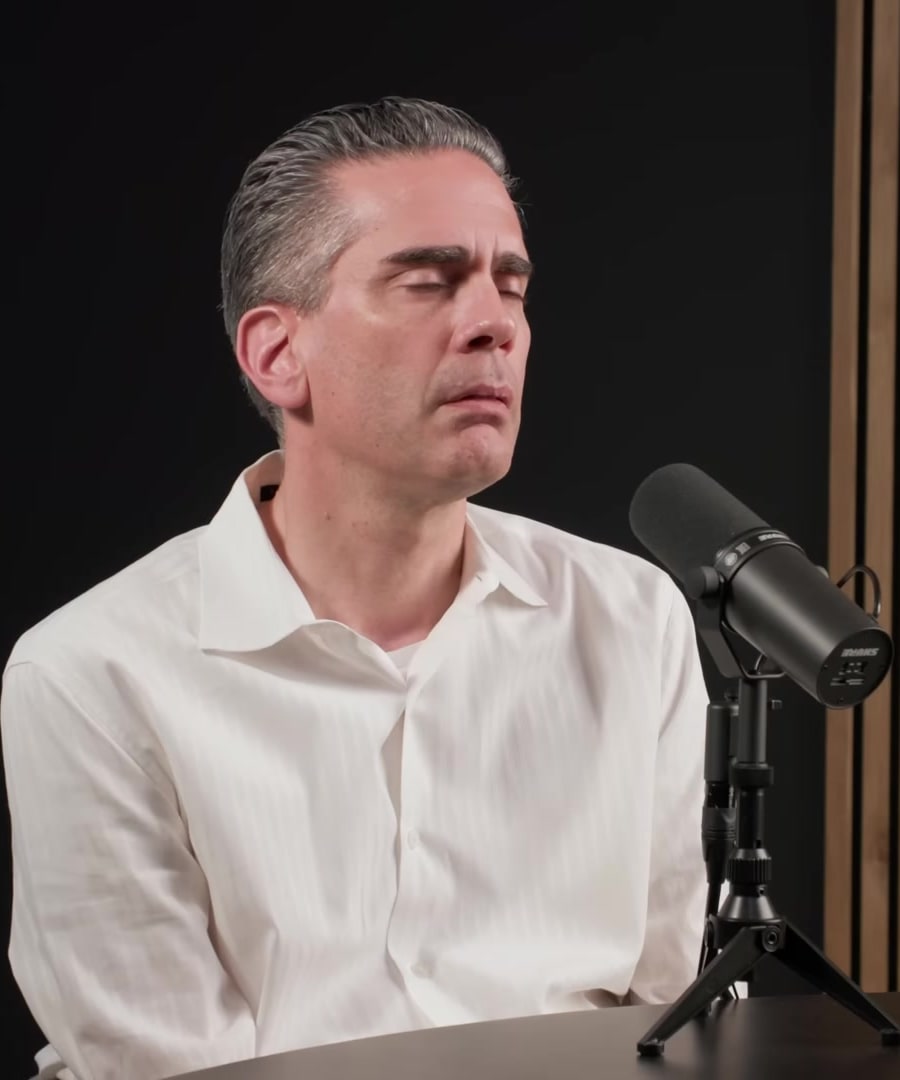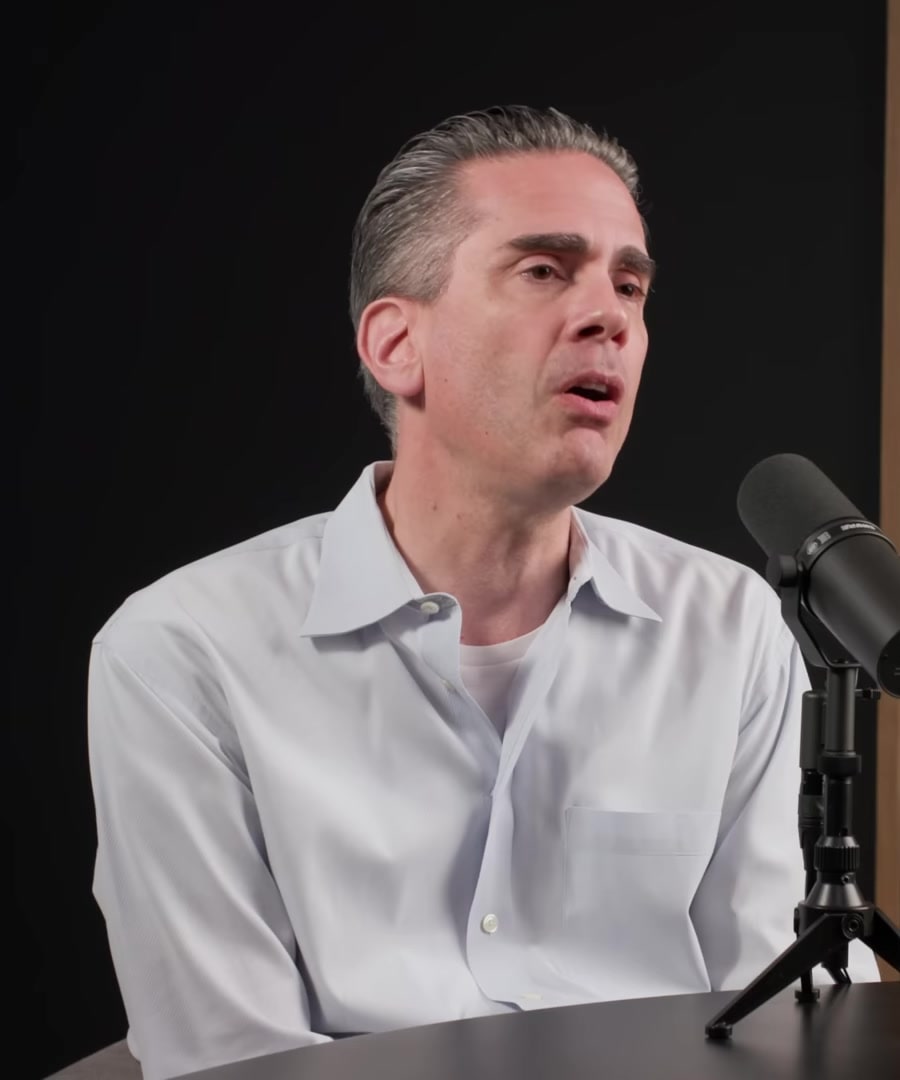Why is morning sunlight important?
Sources:
Morning sunlight plays an essential role in setting our circadian rhythms and promoting wakefulness. emphasizes that the natural bump in cortisol we experience in the morning due to exposure to sunlight is healthy and normal. This cortisol peak is essential for alertness and supports a healthy immune system. The timing of this pulse is vital, and it can be modulated by the timing of light exposure, especially sunlight to the eyes, soon after waking 1.
Exposure to morning sunlight also has beneficial effects on mood, alertness, physical health, and assists with falling and staying asleep at night. It suppresses melatonin, the hormone that makes us sleepy, supports proper metabolism, and sets a timer to help us fall asleep about 16 hours later 2.
In addition to morning light, obtaining sunlight in the eyes during different parts of the day can enhance its positive effects. For instance, mentions the importance of getting some sunlight in the eyes in the late afternoon and evening, as it can protect the nervous system against the disruptive effects of artificial light at night 3.
Overall, making an effort to get sunlight exposure, ideally the morning sunlight as well as some light in the late afternoon and evening, is recommended for better mental health, physical health, and performance. This practice is deeply rooted in science and is not replaceable by artificial light after the sun has risen or via screens or windows 4.
RELATED QUESTIONSDo you have any tips for people with sleep apnea?
Sources:
For individuals with sleep apnea, offers several tips and insights regarding sleep and breathing practices. One major recommendation is to become a nose breather during sleep, which can help to bring more oxygen into the body and offload carbon dioxide more efficiently, thus reducing apnea. For some, this can be achieved through a behavioral intervention such as mouth taping with easily removable tape to encourage nasal breathing 1 2. This can also help to reduce snoring.
Sleep apnea, a condition where breathing is interrupted during sleep, can increase the risk of cardiovascular events, sexual dysfunction, and cognitive issues. Severe cases of sleep apnea may require the use of a CPAP machine, which is a device worn over the face to support breathing 3.
Other contributions include tips for better sleep hygiene and the potential role of supplements. Dr. , a guest on the , also advises paying attention to your sleep posture to avoid reinforcing muscle shortening, particularly if you have already trained during the day 4.
Beyond these specific tips for sleep apnea, adopting habits for better overall sleep quality is important and can complement sleep apnea interventions. These include regular exercise with appropriate timing, maintaining a cool and dark sleep environment, and considering supplements such as magnesium or apigenin to aid sleep 5 6.
In summary, improving nighttime breathing through nasal breathing, proper sleep posture, and general sleep health practices can contribute significantly to managing sleep apnea. However, it's crucial to consult a healthcare provider for personalized advice and treatment, especially for severe cases of sleep apnea.
RELATED QUESTIONSWhat are the best practices for sleep hygiene?
Sources:
Best practices for sleep hygiene shared by the suggest a comprehensive approach:
- Maintain a cool and dark sleep environment. Using tools like eye masks can be beneficial as long as the room is not too warm.
- Keep pets out of the bedroom to improve air quality and reduce potential allergens.
- Environmental factors such as temperature, light, and noise should be regulated for optimal sleep. This can involve using earplugs if they don't disrupt your sleep or adjusting your bedding to ensure a comfortable temperature 1 2.
- Adopt cognitive behavioral therapy techniques which focus on better sleep hygiene. This includes having a regular bedtime and wake-up time, avoiding screens before bedtime due to their blue light emission, and engaging in relaxing activities before going to bed instead of work 3.
- Elevating your feet with a pillow can benefit sleep, but for those with acid reflux, it may be better to elevate the head instead 1.
- Aim for a consistent sleep routine by trying to sleep and wake up at more or less the same time each day to help with mood regulation and overall sleep quality 4.
- A variety of factors, including bedding cleanliness, the timing of exercise, morning sunlight exposure, and avoiding caffeine later in the day, can all influence sleep quality, so it’s worth investigating individual habits to see where improvements can be made 5.
Applying these different strategies can help improve both sleep quality and consistency. It's important to remember that individual needs can vary, so experimentation to see what works best for one's own sleep patterns is often necessary.
RELATED QUESTIONSHow to improve creativity as a musician?
Sources:
To enhance creativity as a musician, and guest , a renowned music producer, discuss the creative process and techniques that can aid artists in various domains, including music:
-
Subconscious and Conscious Interaction: Understanding how your subconscious thoughts can surface to influence your conscious mind is beneficial. Integrating these experiences and thoughts can spark original ideas and creativity.
-
Nature's Influence: Paying attention to how nature and your surroundings affect your internal state can lead to new insights that can feed your creativity.
-
Regular Skill Practice: Ensure that you have a solid foundation in the basics of music, including chords, melodies, and notes. Mastery in your craft creates a strong base for creative exploration.
-
Movement and Divergent Thinking: Engage in activities such as walking, cycling, or swimming that don't require intense focus on anything specific. This can activate neural pathways that enhance divergent thinking, the ability to come up with many unique solutions to a problem, which is crucial for creativity in music.
The episode on the touches on deep and abstract themes regarding creativity, offering practical tools and approaches to accessing the creative process. Moreover, Rick Rubin provides insights in his new book "The Creative Act: A Way of Being," which is recommended as a valuable resource for musicians and anyone looking to tap into their creative potential 1.
Additionally, emphasizes that enhancing your capacity for divergent thinking is paramount. Techniques such as Non-Sleep Deep Rest (NSDR) and engaging in patterns of movement that don't require conscious attention can help access new ideas within a domain where you have existing knowledge or mastery 2.
RELATED QUESTIONS-
Could you share tips for better romantic relationships?
Sources:
Improving romantic relationships involves a combination of understanding oneself, healthy communication, mutual support, and recognizing the influence of individual behaviors on the relationship's dynamic. Here are some tips drawn from the insights provided by experts on the :
-
Understanding Self and Partner: A solid relationship to self, acknowledging both healthy and unhealthy aspects of our unconscious and conscious mind, forms the foundation of good relationships 1.
-
Mutual Regulation: Recognizing that we regulate each other's nervous systems in relationships can foster a supportive environment. Thus, choosing to be a positive, stabilizing presence in your partner's life is beneficial 2.
-
Shared Values and Physical Attraction: Identifying common values and ensuring physical attraction can create a deep connection and a foundation for a long-lasting partnership 3.
-
Agency and Gratitude: Agency, the ability to act independently, and gratitude can be key to successful relationships when practiced actively 1.
-
Recognize Power Dynamics: Be aware of power dynamics in the relationship, ensuring there is a healthy balance and mutual respect. Look for signs of give and take as indicators of a healthy partnership 4.
-
Communication and Transparency: Discuss challenges and differences openly, including topics like sex drive balance or proactive behavior, adjusting to meet each other's needs 5.
-
Isolation vs. Connectivity: Healthy romantic relationships can exist with different levels of external social connections, but isolation by one partner as a means of control is detrimental and must be guarded against 6.
-
Navigating Difficult Dynamics: In the presence of unhealthy dynamics, fostering agency and gratitude is even more crucial to overcome manipulative tactics designed to undermine these qualities 6.
Remember, these tips are based on conversations from the and are not exhaustive solutions. It can be helpful to approach relationship advice in the context of one’s own circumstances and to seek professional guidance when necessary.
RELATED QUESTIONS-
Summarize Dr. Paul Conti: How to Build and Maintain Healthy Relationships | Huberman Lab Guest Series
Sources:
The episode "" discusses various aspects of healthy relationships, including:
-
Anxiety: Understanding the roots of anxiety, including insecurities, biological, and psychological factors. Self-reflection on anxiety and introspection can lead to recognition and change 1.
-
Levels of Emergence: The concept of emergence in relationships, where compatibility may not be based on obvious, tangible factors, but rather a compatibility of generative drives that foster genuine connection 2.
-
Toxic Dynamics: The prevalence of toxic dynamics in different types of relationships, such as workplace and friendships. Emphasizing the need for accountability to counter these issues 3.
-
Darkness and Demoralization: How oppressors thrive in darkness, attempting to isolate and demoralize their victims. The importance of overcoming the internal darkness brought on by such oppression 4.
-
Finding Balance: Addressing imbalances in our drives can impact our well-being, and how recognizing past traumas and building a trauma bond in relationships can contribute to health and balance 5.
Dr. Paul Conti provides insights into improving relationships by understanding psychological and emotional factors, the importance of communication, and reflection for personal and relational health.
RELATED QUESTIONS-
Please explain how addressing imbalances in our drives can impact our well-being, and how recognizing past traumas and building a trauma bond in relationships can contribute to health and balance
Sources:
Addressing imbalances in our drives can significantly impact our well-being by aligning our actions with our innate desires for self-expression, pleasure, and assertiveness. Having drives that are out of balance can result in feelings of dissatisfaction or shutdown, as described by . For instance, if someone has a high pleasure drive but lacks gratification from their preferred activities, such as visiting museums, this can lead to an imbalance 1. Similarly, if someone's assertive drive is low due to a lack of safety or past trauma, it can limit their ability to express themselves 1.
Recognizing past traumas and building a trauma bond in a relationship can contribute to health and balance by fostering mutual support and understanding. As explains, when two people with similar vulnerabilities from past traumas come together, they can, in a healthy context, help each other overcome social avoidance and vulnerability. This bond around trauma can actually be beneficial, enabling individuals to pursue activities they would otherwise avoid due to feelings of vulnerability. When both partners are working on personal health and openly communicating about their challenges, this shared understanding and support can lead to improved individual and relational health 1.
It is noteworthy, however, that trauma bonds can be either negative or positive. They may either exacerbate the trauma if the drives are not in a healthy place or contribute to healing if they allow the individuals to move toward balance and healing. Therefore, a trauma bond does not intrinsically signify a detrimental relationship dynamic. The outcome depends on whether the drives are appropriately engaged and balanced 1.
RELATED QUESTIONSPlease tell me about the different drives such as pleasure, assertiveness and self-expression. Are there other important drives to account for in relationships?
Sources:
Human drives such as the pleasure drive, assertiveness drive, and self-expression are central to our motivation and behavior. These drives shape how we engage with the world and seek gratification. The pleasure drive includes the pursuit of joys that could range from the satisfaction of safety to hedonistic delights. However, imbalance in the pleasure drive could lead to either a lack of motivation or the pursuit of excessive gratification 1.
The assertiveness or "aggression" drive—as uses the term—implies proactive engagement with the world, like defending oneself or exhibiting strong agency. Too little assertiveness can result in passiveness and lack of self-determination, while too much can morph into harmful aggression 2 3.
Moreover, the generative drive is important as it suggests a desire for creative or productive output. Ideally, the generative drive is prominent, with assertiveness and pleasure serving it to maintain a healthy balance. Assessments of well-being might focus on understanding how these drives manifest and influence each other 4.
In relationships, these drives play crucial roles. For example, the pleasure drive can affect how individuals seek and experience intimacy, while the assertiveness drive might influence their capacity to establish boundaries or pursue shared goals. Recognizing and nurturing these drives can promote personal growth and healthier interactions 5.
In summary, the balance of these drives is key. High levels of assertiveness and pleasure without the generative drive's counterbalance can lead to destructive feelings like envy, while very low levels can cause demoralization and isolation 6 7. Addressing the state of each drive and their interplays is an essential aspect of fostering healthier relationships and individual wellbeing.
RELATED QUESTIONSHow can one balance different drives effectively?
Sources:
Balancing different drives like the aggressive drive, pleasure drive, and generative drive is essential for overall well-being. Imbalances can lead to issues such as envy (when drives are excessively high) or demoralization (when they are too low) 1. Here are some strategies to help balance these drives:
-
Nurturing Generative Drive: Aim to nurture your generative drive as it should be the dominant influence in your life. Engage in creative or productive activities that bring satisfaction and meaning 1.
-
Structured Journaling: Use structured journaling as a tool to set specific goals and intentions focused on aspirations and what you want to generate in your life. This practice can help orient your actions towards the generative drive 2.
-
Seeking Balance in Relationships: Find balance within relationships by cultivating understanding and communication around personal traumas, vulnerabilities, and desires. This can help align drives like aggression and pleasure in a more harmonious way 3.
-
Acknowledging and Adjusting Drives: Be aware of the status of your drives. If one is too high or too low, take steps to correct it, which could involve self-reflection, changing behaviors, or seeking external support 1.
By being mindful of these drives and their influence on our lives, we can work towards achieving a more balanced and fulfilling state of mental health.
RELATED QUESTIONS-
How can one balance different drives effectively?
Sources:
To balance different drives effectively, such as the aggressive drive, pleasure drive, and generative drive, consider the following:
-
Prioritize Generative Drive: Aim to prioritize and nurture your generative drive, as it should have the most influence in your life. By fostering this drive, you can create a more fulfilled and balanced life 1.
-
Structured Journaling: Use structured journaling to set specific goals and write about self, focusing on goals and aspirations. This technique can help direct attention towards cultivating the generative drive and maintaining mental health and wellbeing 2.
-
Address Imbalances: Recognize when drives like aggression and pleasure become too high or too low, manifesting as envy or demoralization, respectively. Seek to understand and adjust these drives to restore balance. The key is to maintain a level where you can act on your generative drive, feel satisfaction from activities, and avoid negative states 1.
-
Relationship Dynamics: In relationships, work together to address any imbalances that may exist. This can involve open communication about personal traumas and desires, with each person supporting the other's healthy expression of their drives 3.
By employing these strategies, you can effectively manage and balance your different drives leading to a healthier mental and emotional state.
RELATED QUESTIONS-
Can you explain the theory behind different human drives?
Sources:
The theory behind different human drives, as explained on the by and his guest , revolves around three key drives identified through the observation of human behavior and psychology. These drives are:
-
Aggressive Drive: This is sometimes referred to as an agency or assertion drive. It's about actively engaging and imposing oneself on the world, a form of forward movement, and empowerment. A healthy amount of this drive leads to a strong sense of agency, and its excess can result in harmful aggressiveness 1.
-
Pleasure Drive: This drive is intrinsic to humans and seeks the experience of pleasure. When it becomes excessive and undirected, it can lead to a lack of satisfaction and potentially result in envy, as the individual seeks pleasure continuously without ever feeling truly content or fulfilled 2.
-
Generative Drive: This drive describes the motivation beyond oneself, like nurturing and creating for the betterment of others and the world. It can be viewed as a drive for the common good and is considered the most prominent and healthiest of the three when balanced properly. The generative drive should ideally dominate, with aggression and pleasure subserving it 3.
These drives are influenced by a combination of nature and nurture. Genetic predispositions can set a range for these drives, but experiences in life, especially in one's formative years, can significantly modulate them. Mental health treatment often involves rebalancing these drives to create positive changes on a deeper level, thereby supporting overall well-being and the ability to effectively manage life challenges 4.
Understanding and balancing these drives is crucial for personal growth and healthy psychological functioning. The generative drive is particularly important, as it supports altruism and production of good in the world. When the aggressive and pleasure drives are excessively high and not tempered by the generative drive, they can lead to destructive behaviors and emotional states like envy 2.
RELATED QUESTIONS-
What are good methods for journaling? And what are the benefits to a journaling practice?
Sources:
Good methods for journaling and the benefits to a journaling practice have been extensively discussed by in the . There are various forms of journaling, and they serve different purposes:
-
Data Dump / Free Associative Journaling: This is often done in the morning and involves writing down thoughts and feelings as they come to mind, without any specific structure or goal. This helps to clear the mind and prepare for the day, and can be beneficial for individuals who struggle with organizing their thinking 1.
-
Structured Journaling of Goals and Aspirations: This involves writing down what one desires in life, including specific details about those goals. It allows individuals to flesh out their aspirations and to get comfortable with their desires, which is a crucial step toward actualizing those goals 2.
Benefits of Journaling:
Journaling can induce positive shifts in mental and physical health and has been backed by more than 200 peer-reviewed studies. Benefits include:
- Reducing anxiety and improving sleep 3.
- Lowering symptoms of autoimmune disorders like arthritis and lupus 3.
- Providing relief for conditions such as fibromyalgia and irritable bowel syndrome 3.
- Enhancing memory, decision-making, and other aspects of daily living 4.
- Accelerating progress in talk therapy and treatments for depression and PTSD when combined with those therapies 3.
Transformative Journaling:
delves into a specific form of journaling researched by Dr. James Pennebaker, which involves writing about deeply emotional or traumatic experiences. This process can be emotionally intense and challenging, and it is recommended that individuals take the time to compose themselves after each journaling session. The exercise involves writing about the same difficult experience for 15 to 30 minutes on four consecutive days, allowing for the processing of negative emotions and leading to a multitude of health benefits. Subjects often report significant emotional distress during the process, but also substantial relief and improvements in mental and physical well-being afterward 5 6.
It's important to approach these journaling practices with the understanding that they can bring about powerful and sometimes intense emotional experiences that contribute to personal growth and healing.
RELATED QUESTIONS-
Are there other episodes that discuss journaling?
Sources:
Additional episodes that touch on the topic of journaling include:
- Episode "A Science-Supported Journaling Protocol to Improve Mental & Physical Health"
- This episode goes into depth about a specific journaling protocol that's proven to be effective for both mental and physical health, as supported by over 200 peer-reviewed studies. The method involves writing about one's deepest emotions and thoughts related to the most upsetting experiences in life, leading to improvements in anxiety, sleep, immunity, and symptom relief for various conditions like fibromyalgia and autoimmune disorders 1.
- Episode "Mental Health Toolkit: Tools to Bolster Your Mood & Mental Health"
- In this episode, talks about structured journaling of goals and aspirations as a way to identify and work towards achieving them, emphasizing the importance of fleshing out details around those goals to help actualize them 2.
- Episode "Dr. Paul Conti: Therapy, Treating Trauma & Other Life Challenges"
- Journaling is discussed as a self-help tool to bring new perspectives to one's thoughts and experiences, with the importance of bringing curiosity to self-reflection and finding the right therapist if seeking professional help 3.
These episodes can provide deeper insights into the transformative power of journaling and practical advice on implementing journaling into everyday life for various benefits.
RELATED QUESTIONS- Episode "A Science-Supported Journaling Protocol to Improve Mental & Physical Health"
What are some journaling techniques mentioned in these episodes?
Sources:
Why is morning sunlight important?
- RELATED QUESTIONS
Do you have any tips for people with sleep apnea?
- RELATED QUESTIONS
What are the best practices for sleep hygiene?
- RELATED QUESTIONS
How to improve creativity as a musician?
- RELATED QUESTIONS
Could you share tips for better romantic relationships?
- RELATED QUESTIONS
Summarize Dr. Paul Conti: How to Build and Maintain Healthy Relationships | Huberman Lab Guest Series
- RELATED QUESTIONS
Please explain how addressing imbalances in our drives can impact our well-being, and how recognizing past traumas and building a trauma bond in relationships can contribute to health and balance
- RELATED QUESTIONS
Please tell me about the different drives such as pleasure, assertiveness and self-expression. Are there other important drives to account for in relationships?
- RELATED QUESTIONS
How can one balance different drives effectively?
- RELATED QUESTIONS
How can one balance different drives effectively?
- RELATED QUESTIONS
Can you explain the theory behind different human drives?
- RELATED QUESTIONS
What are good methods for journaling? And what are the benefits to a journaling practice?
- RELATED QUESTIONS
Are there other episodes that discuss journaling?
- RELATED QUESTIONS
What are some journaling techniques mentioned in these episodes?












































